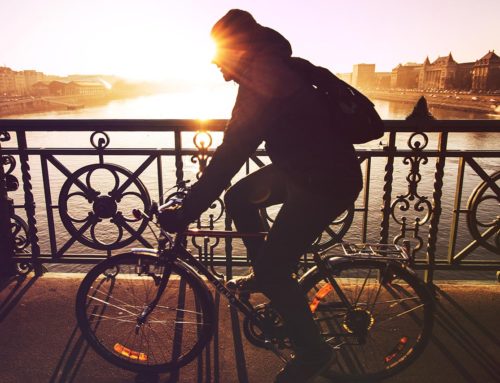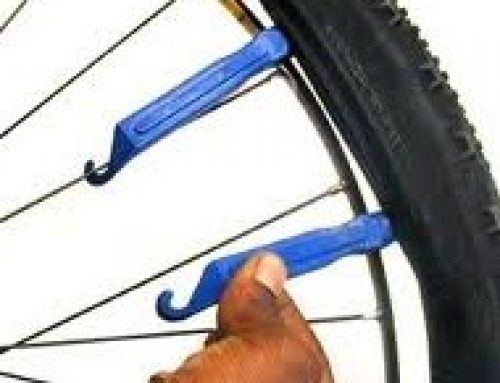Fair weather cyclists take note: it is possible to enjoy a winter weather bike commute. With the right gear and some street smarts, you’ll combat the cold weather cycling and pedal right into spring.
 Dress properly for a winter weather bike commute
Dress properly for a winter weather bike commute
Invest in a few quality pieces of clothing and you’ll already be halfway to outsmarting old man winter. Keep excess moisture away from your skin with wicking base layers. Many cyclists prefer wool in the winter. At the very least, grab a pair of long merino socks to help keep your toes toasty. Booties or toe covers will also help in wet or very cold conditions. In a pinch, a plastic grocery bag and a rubber band will get your home with dry feet.
You may also want to wear wind or waterproof cycling gloves and always keep your head covered, as this is where most of your body heat escapes from. The key to winter warmth is dressing in easy to remove layers. As with all cycling clothing, ensure the outermost layers are brightly colored or reflective so you’re visible in all weather conditions.
Get your bike in gear
Many people use an old touring or mountain bikes for winter riding because moisture and road salts aren’t friendly to bike frames and will wear components faster. Regardless of your ride, choose a bike that allows full fenders. Ensure that any racks are secure and invest in waterproof panniers. Also mount front and rear lights to increase your visibility.

Play it safe
When it snows, you must think like a driver. If you wouldn’t drive a vehicle in snowy conditions, you should also leave your bike at home. If you do find yourself on the road when it’s slick, remember a few tips. Avoid riding on painted lines or through puddles, which are the slickest parts of the road or may contain black ice. Train tracks and metal bridges are also slippery. Cross tracks at a 90-degree angle to reduce the chance of a crash. If you do hit ice, don’t panic or break suddenly. Just coast and try to maintain a straight line. Slow down and if the shoulder or bike lane is inaccessible, remember that it’s legal to take the lane. When you commute by bike in the winter, you have to be defensive, predictable and give yourself more time to stop.





